Have you grown tired and frustrated over time when periodic health challenges emerge affecting you or a family member identifying your home as inaccessible, if even for a short time during recovery? Have you observed other families facing this common dilemma? Are you coming to the realization yours and almost all other existing homes lack flexibility or adaptability having reached their potential? An accident or illness brings the undeniable need for home access out into the open. If you have suddenly become caregiver for your spouse or another family member, you know you are not alone in recognizing this dysfunctional housing phenomenon. Many home caregivers face challenges inside their private residences because traditional homes lack accessibility due to their antiquated architecture. There simply isn't enough room to properly care for another person within a given living space. But where did this commonly seen lack of home accessibility in nearly all homes come from? Perpetual, status quo building techniques, and affordability provide the answers. Over time, along with the exponential birth rate of the baby boomers in the late 40s and 50s, the need for more housing created sprawling American suburbs to accommodate the growing families. Developments sprang up with few architectural options while affordability was the main concern. Today, these same homes slowly and increasingly signify outdated and obsolete architectural barriers exposing a true lack of accessibility for the very people inhabiting them. The situation is ever more expanding in time since the greatest majority of individuals want to age where they currently reside. Our homes are built for shelter, but their construction is guided by designs and dimensions demonstrating a denial or ignorance of true human abilities. It is acknowledged any family living with a disability among any of its family members always psychologically benefits from familiar surroundings. Therefore, moving is not always the best option. Fortunately it doesn't have to be this way with correct planning.
Because everyone is living longer, they will experience many life-challenging events during their extended lifespan. The desire to remain in one's current home is not driven by age. This need is a reaction to and the result of life's experience. The universal design principles are used to increase safety and independence within most current homes. Certain common sense home modifications are typically required to increase accessibility and use. These modifications include, but are not limited to, no-step entrances, wider doorways, the installation of ramps, inclusive kitchen modifications, accessible bathroom adaptations, and the application of smooth, non-skid flooring. When planning on what modifications are needed, always make a list of the existing home's most problematic areas for any or all of its residents. This basic desire is creating unprecedented nationwide challenges and a niche market in the remodeling industry known as Aging in Place. The majority of Americans over the age of 45 want to continue living in an environment they are well acquainted with throughout their maturing years. These people are looking for safety, security, ease of use, and comfort for their forever home before they must vacate due to specialized needs. Clearly, the act of Aging in Place occurs during a period of time when mature homeowners or seniors have the ability to make decisions to better support an increased quality of life. There are three segments served within the Aging in Place marketplace. The first segment includes those homeowners without urgent needs. The second segment focuses on a group of homeowners with progressive health needs. The third sector involves those people who have undergone traumatic health changes or accidental injuries necessitating immediate modifications to the home. The choice to Age in Place does not mean the homeowner has to do everything in the future by themselves. Aging in Place principles supports responsible people living life with dignity and independence even when outside assistance is essential.
But why should we eventually all face the disruptions of modifying our domains to ensure we can remain in them following a health change in life? It is long past due for us to redefine the built environment with what we know to be true. The answer lies within a forever home. This unique home opens up all rooms to all visitors. A forever home is a home you can imagine living in for a lifetime and one that will meet the needs of all residents throughout their lives. This thoughtful living environment is designed and constructed universally to conform to all residents diverse needs and abilities at any age. A forever home is unlike a starter home, and each occurs at different times during a homeowner's life. A starter home is a smaller home needed when you are starting out. This home represents a stepping stone and is a popular option concerning younger homeowners because it's more affordable. The forever home has the ability, through proactive planning and existing home modifications, for a family or all family members to live in the house for a very long time prior to anyone needing full time professional assistance. This home contains accessibility for everyone, regardless of their age, size, or abilities. During life's voyage, the forever home should become a reality as early as possible. This reality means the family can enjoy the comfortable and livable home longer. It has adequate access through wider entries and doorways, a larger kitchen, larger bathrooms, larger bedrooms, and an accessible front and back yard. The more expensive larger forever home has room to comfortably maneuver about when mobility devices or strollers are needed because architectural barriers are nonexistent.
If you have had enough of the status-quo building techniques which created our inaccessible home inventory, you and your family can put your collective thoughts together in order to design and build a house that will last a lifetime. You don't have to discard your favorite design pictures or ideas. The same elevations can be incorporated into the forever home; but rearranged into a Universal Design floorplan. Key questions should be addressed for this uber-customized home. Your family is aware of any lifestyle challenges you face due to progressive diseases or hereditary complications within the group. You know everyone gets older, and in doing so some member might lose cognitive or mobility functions. Your new uncluttered universal floorplan will accommodate a young family with children or an unexpected in-law coming to live with you. It is easy to maneuver inside this universal home going from a completely accessible bathroom to a family gathering in the adaptable kitchen accompanied by a well designed living area. Within the house, you should plan flexible rooms which will accommodate double and triple duty as needed by your family over time. Designing a forever home has many benefits including emotional, economic, and environmental aspects. What's more, you are building a multi-generational setting that can be passed on to the following generations.

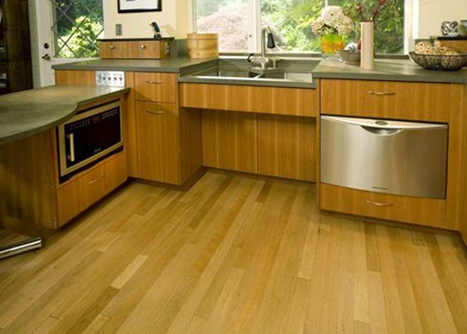
According to the AARP, 80 percent of older homeowners overwhelmingly prefer to Age in Place, which means living in a home safely, independently, and comfortably, regardless of age or ability level. People with disabilities are aging but some healthy individuals are aging into a disability. Aging in Place strictly deals with the remodeling of existing homes. Therefore, to Age in Place, owners need to gradually modify their homes as they mature by increasing access and safety using the principles of Universal Design before a life-changing event forces making sudden architectural changes. The Aging in Place market in the U.S. today is influenced by the increasing size of the aging population, the market desire to remain in one's home, a constantly increasing cultural diversity, and the aging housing stock associated with reduced affordability. The desire to remain in existing homes is driven by social attachments via a network of neighbors, friends, and family. Comfortable positive aging is a way of living rather than a state of being. What's more, seniors who took a proactive approach in modifying their homes over time offer peace of mind to their loved ones or caretakers who know their family members are living safely and independently in their homes.

T-Square Company is one of Austin's premier Aging in Place contractors offering complete Aging in Place services from home assessments to design/builds. We have over 30 years of accessibility knowledge to share with our clients making their home life less complicated. We hold a nationally recognized CAPS certification (Certified Aging in Place Specialist) offered by the National Association of Home Builders, NAHB. Contact T-Square Company today to find out how to proceed toward an accessible second chapter of life while your aging parents remain in their home. We offer complete Aging in Place design services.
By the way, David Traut, the President/owner of T-Square Company has recently published a book entitled "Age in Place at Home: Adapting the Home Environment for All Generations". It is available on Amazon and stands as a reference book for increasing home accessibility through Universal Design.

Tags:
aging in place remodeling,
aging in place home modifications,
aging in place home improvements in Austin,
frameless European,
aging in place designs,
accessible home remodeling,
Universal Design,,
aging in place services,
home modifications for independent living Austin,
universal design ideas,
Austin senior living solutions,
certified aging in place consultant in Austin,
aging in place specialist in Austin,
universal design remodeling contractor,
7 principles of universal design,
applying principles of universal design in Austin,
Austin disability contractors for special needs,
barrier free remodeling,
accessible homes,
universal design/build contractor,
why universal design,
what is universal design in Austin,
what is aging in place,
universal design techniques,
accessible home builder in Austin,
the basics of aging in place,
barrier free home design,
Disability Remodeling Services in Austin, Texas,
Universal Design for Disabilities,
aging in place services for seniors in Austin,
Barrier-free designs,
forever home,
aging parents caregiver guide,
houses designed to last a lifetime
If you have suddenly become caregiver for your aging parents, you are not alone. Everyone is living longer only to experience many life-challenging events during an extended lifespan, but some people require a little assistance. It could involve technology issues or helping them determine a path forward while living in their home. Many aspects are involved with senior living solutions, and the correct route is determined on an individual family basis. The desire to remain in one's current home is not driven by age. This need is a reaction to and the result of life's experience. Any family living with a disability among any of its family members will always benefit from familiar surroundings. To increase safety and independence within your current home, certain modifications to increase accessibility and use are typically required. These modifications include but are not limited to wider doorways, the installation of ramps, inclusive kitchen modifications, accessible bathroom modifications, and the application of smooth, non-skid flooring. When planning on what modifications are needed, always make a list of the home's most problematic areas for any or all of its residents. This basic desire is creating unprecedented nationwide challenges and a niche market in the remodeling industry known as Aging in Place. The majority of Americans over the age of 45 want to continue living in an environment they are well acquainted with throughout their maturing years. These people are looking for safety, security, ease of use, and comfort for their forever home before they must vacate due to specialized needs.
A forever home is unlike a starter home, and each occurs at different times during a resident's life. A starter home is a smaller home needed when you are starting out. It represents a stepping stone. This is a popular option concerning younger homeowners because it's more affordable. The forever home has the ability, through proactive planning and existing home modifications, for a family or all family members to live in the house for a very long time prior to anyone needing full time professional assistance. This home contains accessibility for everyone, regardless of their age, size, or abilities. During life's voyage, the forever home should become a reality as early as possible. This reality means the family can enjoy the comfortable home longer. It has adequate access through wider entries and doorways, a larger kitchen, larger bathrooms, larger bedrooms, and an accessible front and back yard. The more expensive larger forever home has room to comfortably maneuver about when using mobility devices since architectural barriers are nonexistent.

But where did this commonly seen lack of home accessibility in nearly all homes come from? Perpetual, status quo building techniques, and affordability provide the answers. Over time, along with the exponential birth rate of the baby boomers in the late 40s and 50s, the need for more housing created sprawling American suburbs to accommodate the growing families. Developments sprang up with few architectural options while affordability was the main concern. Today, these same homes slowly and increasingly signify outdated and obsolete architectural barriers exposing a true lack of accessibility for the very people inhabiting them. The situation is ever more expanding in time since the greatest majority of individuals want to age where they currently reside.
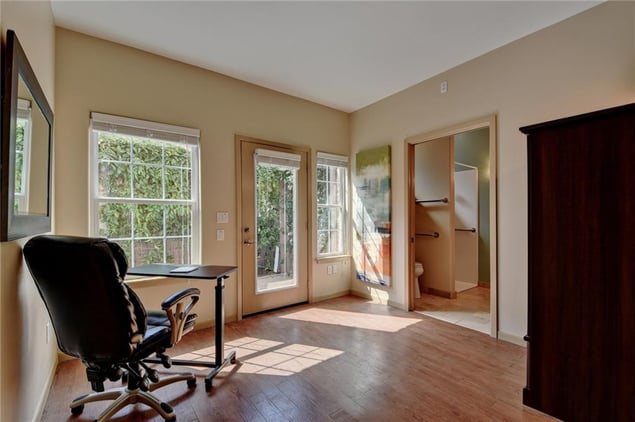
According to the AARP, 80 percent of older homeowners overwhelmingly prefer to Age in Place, which means living in a home safely, independently, and comfortably, regardless of age or ability level. People with disabilities are aging but some healthy individuals are aging into a disability. Aging in Place strictly deals with the remodeling of existing homes. Therefore, to Age in Place, owners need to gradually modify their homes as they mature by increasing access and safety using the principles of Universal Design before a life-changing event forces making sudden architectural changes. The Aging in Place market in the U.S. today is influenced by the increasing size of the aging population, the market desire to remain in one's home, a constantly increasing cultural diversity, and the aging housing stock associated with reduced affordability. The desire to remain in existing homes is driven by social attachments via a network of neighbors, friends, and family. Comfortable positive aging is a way of living rather than a state of being. What's more, seniors who took a proactive approach in modifying their homes over time offer peace of mind to their loved ones or caretakers who know their family members are living safely and independently in their homes.

Clearly, the act of Aging in Place occurs during a period of time when mature homeowners or seniors have the ability to make decisions to better support an increased quality of life. There are three segments served within the Aging in Place marketplace. The first segment includes those homeowners without urgent needs. The second segment focuses on a group of homeowners with progressive health needs. The third sector involves those people who have undergone traumatic health changes or accidental injuries necessitating immediate modifications to the home. The choice to Age in Place does not mean the homeowner has to do everything in the future by themselves. Aging in Place principles supports responsible people living life with dignity and independence even when outside assistance is essential.
T-Square Company is one of Austin's premier Aging in Place contractors offering complete Aging in Place services from home assessments to design/builds. We have over 30 years of accessibility knowledge to share with our clients making their home life less complicated. We hold a nationally recognized CAPS certification (Certified Aging in Place Specialist) offered by the National Association of Home Builders, NAHB. Contact T-Square Company today to find out how to proceed toward an accessible second chapter of life while your aging parents remain in their home. We offer complete Aging in Place design services.
By the way, David Traut, the President/owner of T-Square Company has recently published a book entitled "Age in Place at Home: Adapting the Home Environment for All Generations". It is available on Amazon and stands as a reference book for increasing home accessibility through Universal Design.

Tags:
aging in place remodeling,
aging in place home modifications,
aging in place home improvements in Austin,
frameless European,
aging in place designs,
accessible home remodeling,
Universal Design,,
aging in place services,
home modifications for independent living Austin,
universal design ideas,
Austin senior living solutions,
certified aging in place consultant in Austin,
aging in place specialist in Austin,
universal design remodeling contractor,
7 principles of universal design,
applying principles of universal design in Austin,
Austin disability contractors for special needs,
barrier free remodeling,
accessible homes,
universal design/build contractor,
why universal design,
what is universal design in Austin,
what is aging in place,
universal design techniques,
accessible home builder in Austin,
the basics of aging in place,
barrier free home design,
Disability Remodeling Services in Austin, Texas,
Universal Design for Disabilities,
aging in place services for seniors in Austin,
forever home,
aging parents caregiver guide
Everyone is living longer only to experience many life-challenging events during an extended lifespan.The desire to remain in your current home is not driven by age. This need is a reaction to and the result of life's experience. Any family living with a disability among any of its family members will always benefit from familiar surroundings. To increase safety and independence within your current home, certain modifications to increase accessibility and use are typically required. These modifications include but are not limited to wider doorways, the installation of ramps, inclusive kitchen modifications, accessible bathroom modifications, and the application of smooth, non-skid flooring. When planning on what modifications are needed, always make a list of the home's most problematic areas for any or all of its residents. This basic desire is creating unprecedented nationwide challenges and a niche market in the remodeling industry known as Aging in Place. The majority of Americans over the age of 45 want to continue living in an environment they are well acquainted with throughout their maturing years. These people are looking for safety, security, ease of use, and comfort for their forever home before they must vacate due to specialized needs.

But where did this commonly seen lack of home accessibility in nearly all homes come from? Perpetual, status quo building techniques, and affordability provide the answers. Over time, along with the exponential birth rate of the baby boomers in the late 40s and 50s, the need for more housing created sprawling American suburbs to accommodate the growing families. Developments sprang up with few architectural options while affordability was the main concern. Today, these same homes slowly and increasingly signify outdated and obsolete architectural barriers exposing a true lack of accessibility for the very people inhabiting them. The situation is ever more expanding in time since the greatest majority of individuals want to age where they currently reside.

According to the AARP, 80 percent of older homeowners overwhelmingly prefer to Age in Place, which means living in a home safely, independently, and comfortably, regardless of age or ability level. People with disabilities are aging but healthy individuals are aging into a disability. Aging in Place strictly deals with the remodeling of existing homes. Therefore, to Age in Place, owners need to gradually modify their homes as they mature increasing access and safety using the principles of Universal Design before a life-changing event forces making sudden architectural changes. The Aging in Place market in the U.S. today is influenced by the increasing size of the aging population, the market desire to remain in one's home, a constantly increasing cultural diversity, and the aging housing stock associated with reduced affordability. The desire to remain in existing homes is driven by social attachments via a network of neighbors, friends, and family. Comfortable positive aging is a way of living rather than a state of being. What's more, seniors who took a proactive approach in modifying their homes over time offer peace of mind to their loved ones who know their family members are living safely and independently in their homes.

Clearly, the act of Aging in Place occurs during a period of time when mature homeowners or seniors have the ability to make decisions to better support an increased quality of life. There are three segments served within the Aging in Place marketplace. The first segment includes those homeowners without urgent needs. The second segment focuses on a group of homeowners with progressive health needs. The third sector involves those people who have undergone traumatic health changes or accidental injuries necessitating immediate modifications to the home. The choice to Age in Place does not mean the homeowner has to do everything in the future by themselves. Aging in Place principles supports responsible people living life with dignity and independence even when outside assistance is essential.
T-Square Company is one of Austin's premier Aging in Place contractors offering complete Aging in Place services from home assessments to design/builds. We have over 30 years of accessibility knowledge to share with our clients making their home life less complicated. We hold a nationally recognized CAPS certification (Certified Aging in Place Specialist) offered by the National Association of Home Builders, NAHB. Contact T-Square Company today to find out how to proceed toward an accessible second chapter of your life while remaining at home. We offer complete Aging in Place design services.

Tags:
aging in place remodeling,
aging in place home modifications,
aging in place home improvements in Austin,
accessible home remodeling,
aging in place services,
home modifications for independent living Austin,
universal design ideas,
certified aging in place consultant in Austin,
aging in place specialist in Austin,
universal design remodeling contractor,
7 principles of universal design,
applying principles of universal design in Austin,
barrier free remodeling,
universal design/build contractor,
why universal design,
what is universal design in Austin,
what is aging in place,
universal design techniques,
accessible home builder in Austin,
the basics of aging in place
As a universal design/build construction company located in Austin, Texas, T-Square Company realizes that building for your future changing needs is a very valuable consideration concerning all your periodic remodeling projects. We always design for the future for our clients, regardless of their age or abilities. This thought process is especially true when designing a bathroom upgrade. Being a nationally CAPS certified remodeler, we are very aware your personal needs can change in the blink of an eye. The daily tasks of getting into the bathroom, bathing, showering, using the toilet, or brushing your teeth can become almost impossible without assistance if you don't address your bathroom's inaccessibility in a proactive manner. Any revisions must be completed before you absolutely need the help. Design shortcomings become ever so noticeable if you have an accident and are recovering at home or a debilitating disease sets in. Most all problems caused by architectural barriers will be eliminated with a handicap accessible bathroom remodel.
We are certain that avoiding emergency remodeling while incorporating Universal Design techniques into your home whenever possible is a great way of enhancing your health, independence, and safety. This practice also provides a better overall quality of life. The sooner the main inaccessible areas in your home are addressed, the longer you and your family have to enjoy them. For those desiring to Age in Place, as in safely living in your own home for as long as possible, gradually incorporating the principles of Universal Design into all remodeling projects provides a seamless gateway for successful aging. So, what are the main concerns when designing a bathroom for the future?
Getting Into The Bathroom
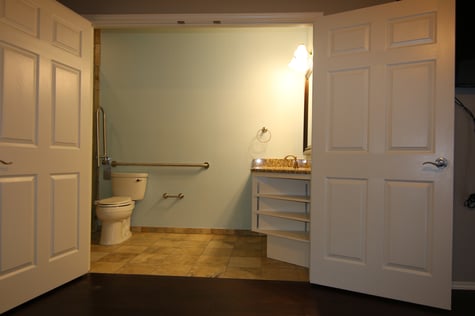
When possible, you should always install a 36-inch wide door into your bathroom allowing all mobility devices to enter without obstruction. Sometimes it's easier when walls cannot be altered or removed to make a large double door entry into the bathroom. Replacing the original twenty-four to twenty-eight-inch wide door offers maximum accessibility for anyone. This universal design element provides clear approaches toward all bathroom fixtures from an adjoining room. Additionally, an unobstructed 60-inch wheelchair turning radius is shared by the bathroom and adjacent room.
An Accessible Shower
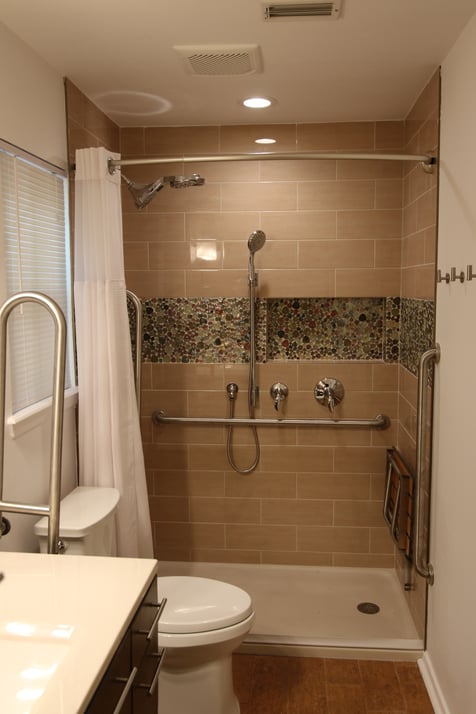
A safe, low-profile (1 1/2" tall) accessible shower with roll-in capability from an add-on ramp suits the needs of most diverse homeowners. Even if you don't require the grab bars during a particular phase of your life, installing adequate blocking before the tile is installed provides a universal path for your future needs once the bars are required. Take note, the grab bars must be able to withstand a shear force of 300 pounds. Their purpose is to provide support and stability when you need it most. Clutter within the shower and especially on the shower floor is a safety hazard. Recessed shampoo niches keep shampoo bottles and other items off the floor. Additionally, folding shower seats are far safer than free-standing models that are rarely ever in the right place. They save space when folded while not in use and never interrupt the use of a shower chair. It is a common misconception that shower controls must be mounted on one wall underneath the fixed shower head. Shower valves can be installed anywhere they are most convenient for the user, especially if a caretaker is involved. A recessed shower can light above the shower decreases shadows and further increases safety.
Using The Toilet
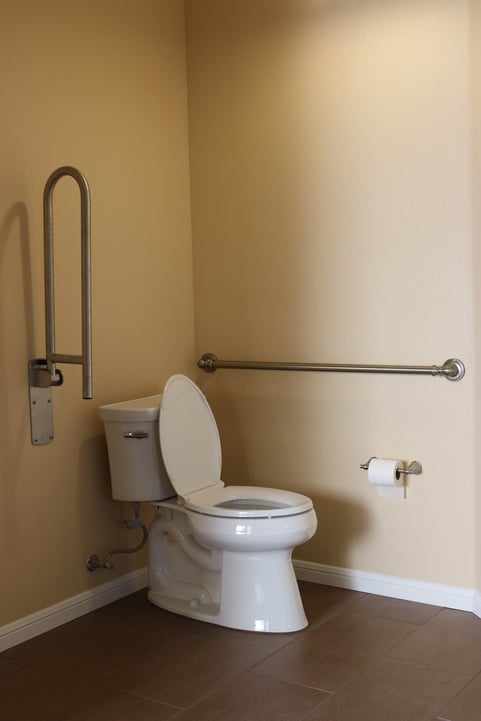
When a toilet exists in a confining room or space, there is no easy way of approaching it if you have mobility problems and especially if you are using any kind of mobility device. After all, safety is the predominant concern when using the toilet. Remove all restricting walls and narrow doors so everyone can freely approach and use the toilet. Once again, grab bars increase safety when they are required and must be adequately prepared for installation. Another problem with toilets involves those that are too short requiring deep knee bends for using them. A higher comfort height toilet offers significant help with this problem. Be sure the flush handle is toward the open side of the bathroom.
Brushing Your Teeth
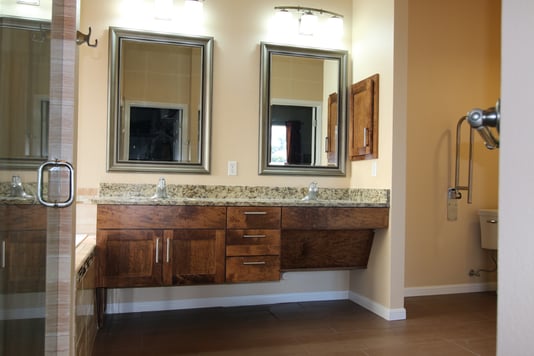
Offering adaptability in a vanity is a universal design aspect. Everyone has equal access while standing or using a wheelchair--if only for a short time during recoveries. More adaptability is offered using multiple height countertops. Lever faucets are easier for everyone to operate, even for those users with arthritis. Motion-sensor faucets create washing areas that are completely hand-free.
When you are ready to take the next steps toward your accessible future, contact T-Square Company in Austin, Texas. We can show you how to address your personal needs using our more than thirty years of knowledge and design/build accessibility experience. We guarantee to keep you safer in your existing home longer and out of dangerous and uncaring institutions using our proven design methods. We offer all handicap accessible home renovations or additions--especially accessible bathrooms.
David L. Traut, CAPS #1636580
Tags:
aging in place remodeling,
custom walk in showers,
certified aging in place specialist,
ADA bathroom Austin, Texas,
disability access bathrooms Austin,
Austin Handicap Remodeling,
universal design ideas,
universal design building for a lifetime,
home accessibility help in Austin,
universal design remodeling contractor,
7 principles of universal design,
applying principles of universal design in Austin,
handicap accessible remodeling,
barrier free remodeling,
disability remodeling,
handicap bathroom remodel,
ADA compliant wheelchair accessible showers,
disability access contractor,
veterans home accessibility help in Austin, Texas,
barrier free showers in Austin,
accessible bathroom design specifications,
ADA vanity in Austin,
accessible toilets,
what is an ADA compliant bathroom,
universal design/build contractor,
universal design vs. aging in place,
home accessibility,
accessible design,
why universal design,
what is aging in place,
accessibility home modifications,
handicap bathroom vanity,
handicap accessible floor plans,
maneuvering in and around the accessible home,
future home building using universal design,
universal design home additions
The present out of control housing market situation prompted a search for answers solving the question of how to create houses capable of meeting the needs of tomorrow while accommodating future life changes. There is no one size fits all home design because everyone’s life experience is unique to them creating a diverse society with diverse physical needs. Using Universal Design, the wide ranging abilities of the homeowner is a major consideration for all successful inclusive and adaptable designs in homes. The absence of the Universal Design principles entering into all existing home architectural endeavors is perpetuating the lack of accessible housing urgently needed for the lifespan of every homeowner. To increase the acceptance of this design concept by everyone, especially the consumer, Universal Design must become a topic of conversation through knowledge and basic understanding. This depends on the members of the broadest populations’ acknowledgement of the need for the use of this practical idea.
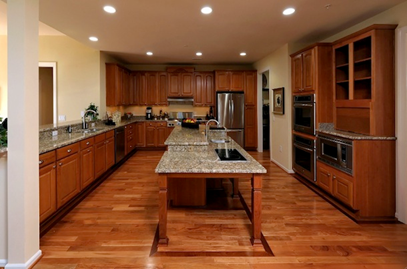
Universal Design plays a significant role in the future accessibility of all home designs. Homeowners must base design decisions on the seven (or eight) principles of Universal Design. Deciding which universal features to include in future forever homes is the most alluring question. Each principle is very useful in itself. The more principles involved in the design process, the greater the adaptable outcome of the home. After all, the smart forward thinking homes of the future depict long term sustainable assets for life allowing Aging in Place to seamlessly follow as people age and evolve. It is true Universal Design emerged out of the accessible and adaptive architectural movement; however, it constantly attempts to combine aesthetics with basic core values for every user. While moving us toward an accessible future, appearing invisible, Universal Design recognizes peoples’ bodies, needs, and lifestyles constantly change along a continuum due to the aging process. Universal Design acknowledges too that everyone ages differently as individuals. One person’s disability type is not experienced like another’s. It is better to live in a more open and comfortable Universal Design home with the flexibility of evolving with the homeowner rather than one which at some uncertain time becomes an impasse during the homeowner’s lifetime.

Embracing Universal Design with its many values and advantages for all people during timely remodeling projects or while building a new home is needed if society is ever going to escape the inaccessible cookie cutter homes of today. Additionally, this design technique offers a win-win solution helping solve problems encountered by multi-generational households. The multi-generational homes of today create the greatest personal accessibility challenges for all the generations involved. The application of Universal Design principles is desperately needed to sustain the choice of living environments for these diversified families. Universal Design homes have the unique ability of simultaneously accommodating strollers, walkers, or wheelchairs within the home without regard to a person’s size, age, or abilities. Furthermore, these homes contain lasting value if the owner ever decides to sell appealing to all society groups. To the uninformed, the folklore associated with Universal Design has stigmatized the process in home building today. This has much to do with why such a unique building concept is not greeted with open arms by the consumer. Beliefs like, it costs more, it takes up too much space, it will make my home have less resale value, it will look institutional, or only a few people could benefit from it represent a select few.
While Universal Design sounds appealing in conversations, it is rare to actually witness it in the built environment. The Universal Design movement recognizes its slow acceptance hinges on historic ties related to being a disability solution. This way of thinking causes implications for consumers and the world of home design presenting a huge misconception. Universal Design never distanced itself from the need for increased accessibility during the disability movement of the 80’s and therefore is mired in ADA jargon producing an indelible unfocused brand. As an inclusive design, Universal Design pertains to overcoming the barriers and stereotypes associated with its terminology in order to stand out as the next and final trend in future housing. Universal Design has no limits for the varying groups of people it helps. Every family member is included when using this design methodology whether they are abled or disabled, short or tall, young or old. With education, people understand Universal Design is the most revolutionary element in housing design today. Once realized how the principles of Universal Design affect everyone in the quest for maximum inclusion, consumers might start paying better attention to this logical building concept. Future home dwellers are fortunate in having this transitional and adaptable design concept in their vocabulary. Possibly they distinguish the designs flexibility as the gateway for tomorrow homes built and designed for everyone at every age. Only then, when people grasp the importance of Universal Design, does it become an everyday building term and a much needed household solution. No longer are personal desires for Aging in Place creating total disruption during life’s waning years. It is successfully accomplished seamlessly following the accessibility offered by Universal Design.

Tags:
ADA compliant kitchen cabinets,
accessible routes,
barrier free access,
wheelchair accessible baths and kitchens,
CAPS certification,
custom walk in showers,
ADA kitchen cabinets,
wheelchair accessible baths,
CAPS professional in Austin,
Universal Design,,
aging in place specialist,
aging in place design,,
handicap accessibility,
roll in showers,
accessibility designs Austin Texas,
roll in showers in Austin,
universal design/build,
universal design ideas,
Austin Accessibility Design,
certified aging in place consultant in Austin,
aging in place specialist in Austin,
universal design building for a lifetime,
what is universal design,
home accessibility help in Austin,
universal design kitchen ideas,
universal design remodeling techniques,
universal design remodeling contractor,
why is universal design important,
universal design principles,
7 principles of universal design,
universal principles of design,
Universal Principles of design revised and updated,
principles of universal design,
applying principles of universal design in Austin,
special needs contractor in Austin,
disability and special needs contractor Austin,
bathrooms with disability access in Austin, Texas,
ADA compliant wheelchair accessible showers,
disability access contractor,
barrier free showers in Austin,
ADA compliant roll in showers,
wheelchair accessible shower stalls,
roll in shower,
accessible bathroom design specifications,
wheelchair accessible toilets,
barrier free toilets,
handicap accessible toilets,
what is ada compliant,
home access,
accessible homes,
home access in Austin,
universal design/build contractor,
universal design vs. aging in place,
universal design contractor,
accessible design,
why universal design,
wheelchair accessible housing,
handicap accessible housing,
accessible homes in austin,
accessibility home modifications,
wheelchair accessible bathroom,
handicap bathroom design,
modifying your home for a disabled child,
accessible home builder in Austin,
wheelchair accessible homes,
universal home design in Austin,
the basics of aging in place,
how the life cycle affects aging in place,
applying universal design,
maneuvering in and around the accessible home,
Universal Design Garages,
Universal Bathroom Design,
Universal Design Bedroom,
universal kitchen design,
wheelchair accessible kitchens,
universal design kitchen,
barrier free kitchens,
disability access kitchens,
the universal design laundry,
barrier free laundry,
future home building using universal design,
universal design home builder,
universal design home additions,
barrier free design,
barrier free home design
Like in the garage of the home, the laundry is often overlooked when planning a Universal Design setting to Age in Place. The washer and dryer are separate units arranged side by side. If stacking, the upper drying unit is not accessible for a seated user. They are front loading machines not top loading models. This arrangement allows the user to look directly into either machine while accomplishing their duties. One problem concerning these appliances is like that of the dishwasher. If they are sitting directly on the floor, a seated person does not have a direct line of sight inside to see the garments. To solve this problem, just like the dishwasher, the machines are raised placing them upon a platform or pedestal. Many manufacturers offer matching pedestals around twelve inches tall. The advantage of using the matching pedestals is they often include a drawer unit for storing items.

When configuring the Universal Design laundry room, provide a clear five foot turning radius directly in front of the washer and dryer for approaching both machines. If the laundry room is large enough, a 30 x 48 inch approach area is associated with the machines as with all appliances. This configuration is also used if the machines are in a closet. A useful detail for either situation is to have machines provided with opposite swing doors both opening from the middle. This way a person is between the machines with access to both for sorting clothes at the same time. Otherwise one machine door becomes an architectural barrier for anyone in a wheelchair.
A larger laundry room has both natural and layered lighting. A window is so important in the heat gaining laundry for additional ventilation during certain times of the year and providing natural light for working. Along with an AC duct, install a vented exhaust fan in the laundry decreasing humidity as it becomes a problem. As with any Aging in Place designs, well-lit rooms are much easier to work in for everyone. Additional task lighting is installed wherever needed like underneath wall cabinets.
To gain entrance to the laundry room, a minimum 36” door coming off the accessible route is required. A five foot clear turning radius in the middle of the room offers clear approaches to the sink, machines, ironing and hanging facilities. Pocket or barn doors are a great choice for a laundry entrance requiring no planning for their swing or the space needed when they are opened. Laundry activities are loud at times so plan for deadening them with the door choice. The laundry room needs ample room in order to approach and maneuver. Accessible and adequate storage is a major consideration. Just like in the kitchen, a laundry sink has roll under capability for a wheelchair user. The sink has an associated 30 x 48 inch clear area in front for approach in the layout. The faucet is an easily operated accessible pull out model and the cabinet top is installed at a universal 34 inch height. Here again, multiple height cabinet tops work well in different areas of the room. Additional cabinets and adjustable shelving are placed as space permits using universal heights and reach distances. A fold down clothes folding shelf is great as needed with roll under capability. When not in use it is folded away against the wall gaining back the original floor space.

Racks and shelving are installed for hanging and sorting clothes. Keep in mind the 48 inch reach limit for a seated person. Ironing clothes is a usual chore with the laundry but ironing boards are always in the way no matter where they are assembled. To solve this problem, install an adjustable fold up model which is also rolled under. When not in use the ironing board is stored in the accompanying wall cabinet regaining the floor space. These ironing board units are available with a separate electrical outlet inside for the iron preventing running extension cords creating trip hazards. There are also folding ironing board drawer units which are installed in a base cabinet or below a work top. The drawback with these units is the lack of flexibility since they are installed at a fixed location and height.

Tags:
barrier free access,
aging in place remodeling,
aging in place home improvements in Austin,
Universal Design,,
Remodel kitchen,
Austin kitchen remodel,
aging in place services,
home modifications Austin, Texas,
accessibility remodelers in Austin,
home modifications for independent living Austin,
universal design ideas,
Austin Accessibility Design,
certified aging in place consultant in Austin,
aging in place specialist in Austin,
home accessibility help in Austin,
home remodeling for disabled in Austin Texas,
universal design kitchen ideas,
universal design remodeling contractor,
universal design building contractor,
7 principles of universal design,
principles of universal design,
applying principles of universal design in Austin,
disability access contractor,
home remodeling contractor residential,
home access,
universal design/build contractor,
universal design vs. aging in place,
universal design contractor,
what is universal design in Austin,
accessible housing,
accessible homes in austin,
universal design techniques,
accessibility home modifications,
wheelchair access,
applying universal design,
universal kitchen design,
the universal design laundry,
barrier free laundry
A Universal Design approach to kitchen conception takes into account people’s varying degrees of ability and disability rather than someone is either fully-functional or disabled. The diversity among the users of the kitchen includes size, age and agility. The kitchen represents the family hub, and for the designated cook of the day, it is where many hours are spent caring for the family. A Universally Designed kitchen supports the diversity of all cooks, users, and helpers. With the additional cooks like granny or the kids, the kitchen no longer adequately accommodates everyone’s participation and changes need to be made. This is especially noticeable once families decide to help each other and become multi-generational. Enlarged work spaces, larger passing areas, accessible work surfaces, storage within universal reach distances, accessible appliances, and flexible and layered lighting are a few of the inclusive changes for the kitchen. A cohesive blend of universal functionality for the abled and disabled with conventional convenience aspects for other family members is the goal guaranteeing a successful and accessible Universal Design kitchen for any home.
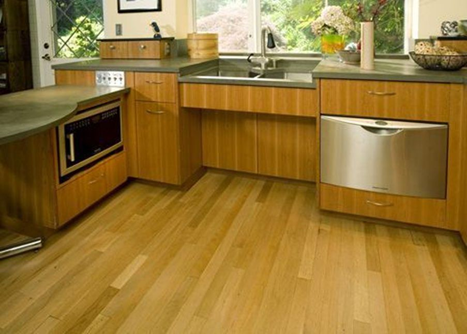
Homes with wheelchair accessible kitchens representing a by-product of Universal Design are a predictable necessity for the ever aging population. With the right layout, it is possible to make a home for maintaining the quality of life of the homeowners with disabilities while helping them live a more healthy, safe, and independent life. Kitchens with architectural barrier free layouts are more functional for everyone involved especially when mobility devices are required. Universal Design techniques give everyone a chance for equal independence. These very basic techniques provide adaptations or specialized designs regardless of age, ability, or situation.
In Universal Design kitchens, the work areas containing the sink and cook top have the capability of moving up and down with the touch of a button further accommodating the seated user or a helpful child. Cleaning is easier because of the adjustable height work and storage areas. When planning a Universal Design kitchen for anyone, every aspect of the space is considered from the cabinet height to the accessibility of appliances, to the space between cabinets and walls or islands. The principles of Universal Design call for the space to be functional and accessible for everyone in the household. This includes older homeowners with mobility or sight issues, as well as younger members of the family.

Layout and flow is especially considered when planning a Universal Design kitchen space. To promote functionality for all occupants, it is vital to consider every aspect of the design including doors, traffic patterns, and workstations. The universally designed accessible kitchen is one of usability. People need roll under capability at the sink and at least one food prep area if nowhere else. A clear floor space of 30 x 48 inches is provided in front of each accessible appliance and these areas of approach can overlap especially at the clear 5 foot turning radius. Raised dishwashers offer easier access to dishes and lowered microwaves and other appliances solve other reach distance problems making it easier to live with a disability.

Tags:
kitchen makeovers,
ADA accessible,
accessible routes,
barrier free access,
aging in place home modifications,
wheelchair accessible baths and kitchens,
handicap home modifications,
accessible home remodeling,
aging in place specialist,
disability home modifications in Austin,
kitchen cabinets Austin,
handicap home modifications for disabled,
ADA remodeling Austin, Texas,
accessibility designs Austin Texas,
kitchen cabinet remodel Austin, Texas,
Austin kitchen cabinets,
disability access bathrooms Austin,
disability remodeling in Austin,
universal design/build,
universal design ideas,
universal design/build ideas,
Austin accessible home remodeling,
universal design building for a lifetime,
home accessibility help in Austin,
wheelchair accessible home remodeling in Austin,
kitchen remodel near me,
kitchen remodeling company in Austin Texas,
universal design remodeling contractor,
universal design principles,
universal principles of design,
applying principles of universal design in Austin,
accessible home remodeling for disabilities,
home access,
accessible homes,
home access in Austin,
universal design techniques,
accessibility home modifications,
wheelchair accessible homes,
universal home design in Austin,
universal kitchen design,
wheelchair accessible kitchens,
universal design kitchen,
barrier free kitchens,
disability access kitchens
Accessible bedrooms are important for people with or without disabilities and for anyone planning to Age in Place. A functional accessible bedroom involves basic Universal Design principles to accommodate future needs. This endeavor ensures access to everyone regardless of their age, abilities, or size. Using Universal Design in the bedroom guarantees everything is easy to see, in reach, and most importantly, easy to approach. Going from the bathroom to the bedroom involves the shortest distance allowed without turns if possible. Traveling from the accessible bedroom through a 36 inch wide door provides access into the designated accessible bathroom. The size of the targeted bedroom dictates the furniture layout. Determine the best furniture placement allowing a clear five foot turning radius inside the bedroom.
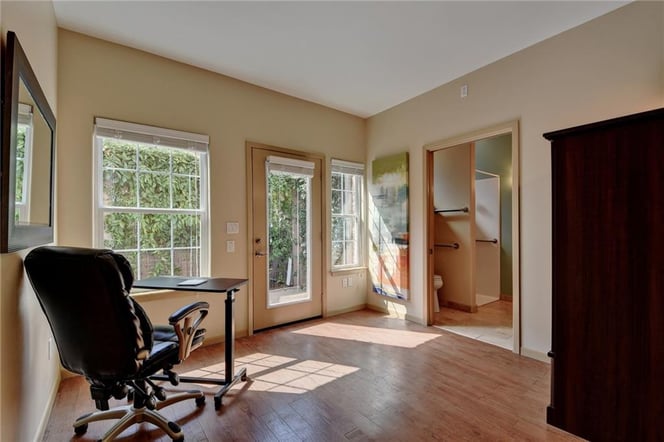
Arrange furniture producing a clear unobstructed 36 inch wide path and prevent clutter. Visualize moving around in the bedroom while approaching the closet utilizing a 30 x 48 inch clear space overlapping with the turning radius area. Always avoid clutter using too much furniture causing interference and trip hazards.

The closet and dressing area are part of the bedroom. When feasible, open shelf and drawer storage for non-hanging items provide the greatest accessibility in the closet. Built in pull out shelves and drawers are installed below the 48 inch rod/shelf location for specific storage. Fixed shelves or a pull down rod is installed as a storage solution above the 48 inch rod/shelf. Clothes carousels and automated shoe storage units provide further options for the closet. Automated shoe storage units provide an option to regular stationary shoe storage providing greater storage capacity. In any good Universal Design bedroom the lighting, color finishes, and flooring are specified correctly ensuring increased safety and ease of use concerning everyone using the bedroom. The end result is functional and beautiful as well as spacious creating a feeling of openness.

Tags:
barrier free access,
aging in place remodeling,
aging in place services,
disability home modifications in Austin,
home modifications Austin, Texas,
accessibility designs Austin Texas,
home modifications for independent living Austin,
universal design/build,
universal design ideas,
universal design/build ideas,
aging in place specialist in Austin,
home modifications for children with disabilities,
universal designbuilding for the future,
home accessibility help in Austin,
universal design remodeling contractor,
universal design building contractor,
universal principles of design,
applying principles of universal design in Austin,
special needs contractor in Austin,
barrier free remodeling,
handicap accessible home modifications,
disability remodeling,
veterans home remodeling in Austin, Texas,
home access,
universal design/build contractor,
universal design contractor,
home accessibility,
accessible design,
what is universal design in Austin,
accessible housing,
accessible homes in austin,
universal design techniques,
accessibility home modifications,
wheelchair access,
accessible home builder in Austin,
disability renovation services in Austin Texas,
applying universal design,
Universal Design Bedroom
The garage is often overlooked when planning an Aging in Place project. A uniquely specified floor plan, special attention in how the house is entered from the garage and adequate lighting for safety encompass a Universal Design in the garage. Wider and higher clearances are required for greater accessibility. Universal Design for garages deals with the garage footprint and the associated maneuvering space around vehicles. The Universal Design garage floor plan includes a wide enough door to accommodate over-sized vehicles. A typical garage measures 22-24 feet in depth and 15-18 feet in width. Potentially accessible van storage changes a current double garage into a single car garage when the wheelchair user is entering or exiting the garage from a side door of the van. A clear five feet turning radius at the loading spot is observed allowing the wheelchair to freely move about. The single vehicle consumes the entire garage space since 15 feet in width is needed for van access on the side. Storage of a second vehicle resumes following the transport and unloading of the wheelchair user. Eighteen feet wide by eight feet tall over-sized garage doors are adequate for most any over-sized vehicle clearance. If rear vehicle ramps are needed for loading or unloading the disabled passenger supplementary space is needed. The van is backed into the garage for this situation assuring the wheelchair user is underneath a protecting roof.

A typical garage has a 4 inch tire curb bump protecting the home from water flowing in. This curb bump requires at least a 4 feet long ramp to overcome the change in elevation. The overall garage space is reduced using this accessibility aid. If the sunken garage has multiple steps, consider a space saving vertical platform lift as opposed to an extended ramp. This ultimately saves precious maneuvering garage space. Universal Design entries into the house require a no step entry through a 36 inch wide door. One major advantage concerning garage entries is they provide total weather protection for a disadvantaged person transitioning into the home heading toward the accessible route. To make entering the home even easier, install an electric door opener operated from a smartphone or keypad. It opens with the touch of a button and the integrated electric strike eliminates the need to fumble for keys. The opener has a built in safety delay allowing a person to pass clear of the door entrance before closing.
If adequate lighting in the garage was never a consideration it must be upgraded per Universal Design concepts. Proper lighting is one of the key components in Universal Design. It will help eliminate tripping and falling. At least one or more additional lights are installed where needed to overcome this problem especially in the direct vicinity of the home entrance door. These additional lights can be controlled by a motion switch causing them to come on automatically when anything enters the garage.

Tags:
accessible routes,
barrier free access,
accessible home remodeling,
disability home modifications in Austin,
accessibility remodelers in Austin,
accessibility designs Austin Texas,
home modifications for independent living Austin,
Austin Handicap Remodeling,
universal design ideas,
universal design/build ideas,
certified aging in place consultant in Austin,
aging in place specialist in Austin,
home modifications for children with disabilities,
why is aging in place important,
universal design remodeling contractor,
universal design building contractor,
applying principles of universal design in Austin,
accessible home remodeling for disabilities,
home access,
universal design/build contractor,
home accessibility,
why universal design,
handicap accessible house plans,
accessible homes in austin,
accessibility home modifications,
the basics of aging in place,
Universal Design Garages
The number one safety hazard for elderly or disabled people of any age is negotiating level changes both outside and within the home--steps at the entry, stairs between floors, curbs to step over when entering the bath or shower, and being able to access patios, decks, and terraces. When Universal Design is correctly incorporated into a home’s layout, these flexible houses accommodate the needs of their owners and their visitors even as those needs evolve over time. Barrier free homes are functional and comfortable as well as accessible to everyone.
Visitability or the lack thereof begins at the curb for every home. This term refers to how easy it is for all people coming by to pay a visit or stay with the homeowner regardless of their physical abilities. Occupants and visitors are capable of entering an accessible bathroom located on the same floor representing the visitability of the home. Ideally, the entry into the house is through a 36 inch wide door having an ADA threshold to create a no step entry. Entrance is obtained using an easily graspable lever style lock.
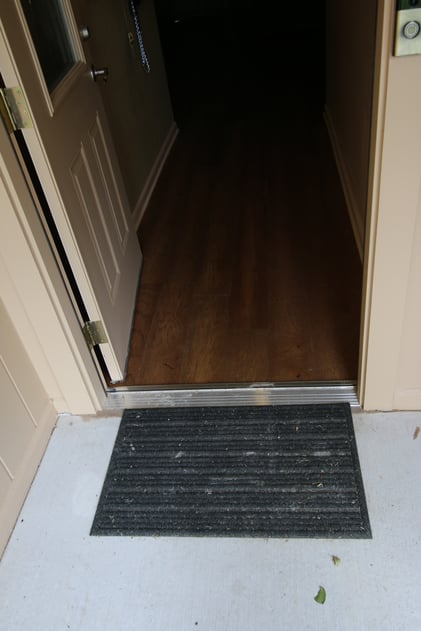
The accessible entrance is a great place to begin an accessible route for most homes. Once inside the structure a new set of problems concerning accessibility are discovered along the extended accessible route if the entire first floor is not on one single level. The designated accessible route continues into all of the most used rooms increasing accessibility. All swinging doors are minimally 36 inches wide using Universal Design along the accessible route producing a clear 32 inch wide opening when the door is opened to ninety degrees. Sliding, pocket, and bi-fold doors require less operating approach space because the door is better contained along the wall in which it is mounted.
With increasing age or following a temporary health setback, simply maneuvering around inside the home is increasingly more difficult. This designated route includes a 5 x 5 foot clear turning space required for wheelchairs in the main living area, kitchen, the bedroom, and one bathroom. The selection, placement, and design of doors and doorways influence a wide range of people. The location of the doorways affects furniture placement and usable space within the associated room. This in turn affects the clear floor space and usability of the living environment for someone confined to a wheelchair utilizing the accessible route.

Tags:
barrier free access,
aging in place remodeling,
aging in place,
aging in place home improvements in Austin,
aging in place remodels,
accessible home remodeling,
Universal Design,,
home modifications for independent living,
aging in place specialist,
aging in place services,
aging in place design,,
certified aging in place specialist,
handicap remodeling contractors in Austin,
disability home modifications in Austin,
handicap accessibility,
accessibility remodelers in Austin,
home modifications for independent living Austin,
disability remodeling in Austin,
Austin Handicap Remodeling,
universal design/build,
universal design ideas,
Austin Accessibility Design,
Austin accessible home remodeling,
certified aging in place consultant in Austin,
aging in place specialist in Austin,
aging in place design in Austin,
age in place home design,
what does it mean to age in place,
what is universal design,
aging in place home remodeling,
home accessibility help in Austin,
home remodeling for disabled in Austin Texas,
wheelchair accessible home remodeling in Austin,
universal design remodeling techniques,
universal design remodeling contractor,
universal design building contractor,
universal design principles,
applying principles of universal design in Austin,
disability contractor in Austin,
disability and special needs contractor Austin,
Austin disability contractors for special needs,
handicap accessible remodeling,
barrier free remodeling,
handicap remodeling,
disability remodeling,
disability access contractor,
home access,
universal design vs. aging in place,
universal design contractor,
home accessibility,
accessible design,
why universal design,
what is universal design in Austin,
wheelchair accessible housing,
handicap accessible housing,
accessible homes in austin,
universal design techniques,
accessibility home modifications,
accessible home modifications,
modifying your home for a disabled child,
handicap accessible floor plans,
accessible home builder in Austin,
wheelchair accessible homes,
special needs contractor,
universal home design in Austin,
home renovations for disability in Austin,
disability remodeling contractor in Austin,
disability renovation services in Austin Texas,
the basics of aging in place,
how the life cycle affects aging in place,
aging in place versus universal design,
maneuvering in and around the accessible home


























